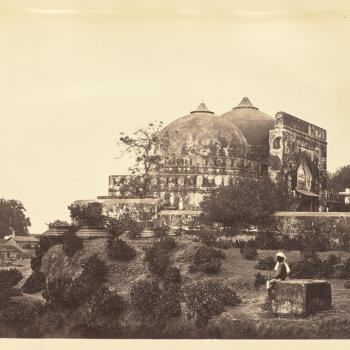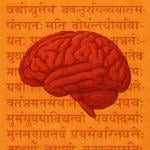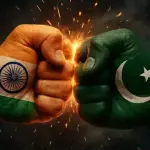The Incident
On Feb 14, a convoy of 78 vehicles carrying 2547 CRPF personnel left Jammu and headed to Srinagar. A 270-km journey on the Jammu-Srinagar highway.
Around 3.30pm, an Scorpio car laden with explosives driving alongside the convoy crashed into one of the vehicles at Awantipora, 30 km from Srinagar. 42 CRPF personnel were killed.
Jaish-e-Mohammad (JeM), claimed responsibility for the terror strike. The suicide bomber was Adil Dar, a 22-year-old Kashmiri local and high-school dropout. He had been in contact with JeM handlers for three months before the incident. He recorded a video before the attack in which he said, “ I will be heaven by the time you see this video.”
An important point is that civilian vehicles are not stopped on the road while an armed forces convoy moves. They are allowed to overtake and be between convoy vehicles. This was not the case before 2003 in J&K, when CRPF could stop civilian vehicles from entering convoy path. After J&K government alleged civilians were harassed, forces were asked not to restrict civilian vehicles. Jammu-Srinagar highway has many bylanes and monitoring civilian vehicles entering highway is difficult. Ministry of Home Affairs has now given orders to stop all civil traffic when convoys move.
This is the deadliest single action against the security forces in almost three decades of terrorism in Jammu and Kashmir. The last time CRPF suffered such casualties was in Dantewada, Chhattisgarh when Maoists insurgents ambushed and killed 75 CRPF personnel in April 2010.
Jaish-e-Mohammed chief Masood Azhar’s nephew Mohammed Umair is the prime suspect as mastermind of the operation. Umair is the son of Azhar’s elder brother Athar Ibrahim. He is believed to be currently operating in the Pulwama area in South Kashmir after having undergone terrorist training in Afghanistan. There is also another individual who was the bomb-maker, who is believed to be presently in Muzaffarabad in Pakistan-occupied-Kashmir (PoK).
Background Situation
In the last few months, under operation “All Out”, the security forces killed several militants including some top militant leaders. Forces killed two nephews of Masood Azhar, the head of JeM.
213 terrorists were eliminated in 2017, 150 terrorists were neutralised in 2016, the number was 108 in 2015. Civilian killings in the incidents also rose to 40 in 2017, from 15 in 2016 and 17 in 2015. The number of security personnel martyred was 80, in 2016, the number was 82 and in 2015 it was 39. The number of stone-pelting incidents showed a decline in 2017 with 1,261 incidents recorded. This is a marked improvement from 2016 -– the year when Burhan Wani, the Hizbul Mujahideen commander was killed by security forces – 2,808 incidents were reported. Though the numbers are still high compared to 2015 when 730 were recorded.
It seemed that finally the security grid had established an upper hand and militants were on the run. Fresh recruitment into militant ranks, that had shown upward trend following the killing of Hizbul Mujahideen’s Burhan Wani in 2016, also came down and so did street protests.
On January 26, the police said that Baramulla district (one of 5 districts where militant-army conflict was frequent) in the north of Jammu and Kashmir became the first region to be free of militant activity.
On 3 February, Prime Minister Narendra Modi visited J&K and inaugurated several developmental projects.
JeM is thought to have been looking for ways to push back and re-establish its presence, and destroy any semblance of normalcy in J&K.
Intelligence failure?
That such a massive amount of explosives was used indicates an intelligence failure. It is not clear if the explosives were sent across the border or prepared locally. A few weeks before the attack, intelligence inputs were given asking all army and paramilitary forces to be prepared for a largescale attack.
In early January, intelligence forces also indicated that in December, a JeM explosives expert had infiltrated into Kashmir. This man was considered a serious threat, as he was a “highly trained war expert” who has also fought in Afghanistan. He was specifically sent over to revenge the killing of Masood Azhar’s nephews, who were killed by security forces last year. He was accompanied by two hardcore terrorists. The Governor of Jammu and Kashmir has admitted “security lapses” leading to the deadly attack.
Within 100 hours of the attack however, the Army liquidated these terrorists and eliminated them in an encounter.
Local terrorists
Earlier, JeM and other outfits depended on infiltrating well-trained terrorists from across the border. Many of these are from Punjab, where JeM is headquartered. Many of these terrorists were death row convicts and others were terminal HIV cases. They were given the promise of reaching heaven and that their families would be well taken care of. They were termed Fidayeen and undertook almost suicidal attacks on the security forces.
However, infiltration has become much harder in recent times. JeM now has shifted to encouraging local youth to carry out attacks. While some of these youth are well-trained (it is not clear whether they receive training in India or Pakistan) most of them are not well-trained. The modus operandi seems to be shifting to strap-on explosive or car-based explosive suicide attacks. Especially since these are local recruits, the whole Kashmir population would become suspect, including locals working inside army camps.
Many of these recruits have been radicalized very quickly, within 2-3 months. Each suicide bomber releases a video calling on youth to rise against the “cow-urine drinking infidels.” Kashmiri youth are generally frustrated because of lack of jobs or any secure future, and provide prime recruits. Adil Dar, the bomber in this case, was the son of a poor blanket seller. He is thought to have been radicalized and ran away from home after being hit by a bullet while protesting another terrorists killing. Some of the other suicide bombers were sons or brothers of police officers.
Article 370 in a way isolates Kashmir from the rest of India. The entry of people, industry and investment is heavily restricted and a vacuum is therefore created in terms of media and employment.
This does not restrict separatist elements or cross-border elements however, who use this vacuum to create a narrative that suits their needs. Apart from creating their media narrative, they use the poverty of Kashmiri youth as a bargaining chip. The mobs involved in stone-pelting of armed forces and attendance at funerals of suicide bombers are largely paid to begin with. This can be confirmed from the fact that after demonetisation, gathering crowds became difficult at these events.
The Bharatiya Janata Party has been one party that has a clear stand on the revocation of Article 370 as a permanent solution to the Kashmir issue.
Indian Reaction
The PM said, “We will give a befitting reply. Those who committed this heinous act will pay a heavy price. Those who supported it will definitely be punished.” He said that he has left it to the military forces to decide what the military response should be. He however promised a “munh todh jawab (smash your face response).” Jaitley said India would ensure “the complete isolation of Pakistan from the international community”.
Envoys of all Security Council nations and 20 other countries were appraised of P-5 (USA; Russia; China; France & UK) and 20 other envoys of Delhi’s allegations against Islamabad’s role in the incident and seeking to strengthen counter-terror partnerships.
Pakistan was informed that India was demanding verifiable action against JeM.
The governor of J&K (J&K is under President’s rule after the BJP PDP fallout) has withdrawn all security cover and government facilities given to Kashmiri separatist leaders Mirwaiz Umar Farooq, Abdul Ghani Bhat, Bilal Lone, Hashim Qureshi and Shabir Shah. Rajnath Singh had already spoken to the media stating that the security cover extended to ISI and Pakistan funded individuals should be reviewed. A few days later, security cover to 22 other separatists and over 100 local politicians was withdrawn.
Nitin Gadkari also announced that India would no longer allow its own share of water from the Indus treaty to flow unused into Pakistan. They would be diverted to irrigate 5000 hectares in Punjab and 30,000 hectares in Jammu & Kashmir.
All-party meeting passed a resolution condemning the Pulwama terrorist attack today in New Delhi. All opposition parties have said that they stand with the government and that these attacks will not be used for political one upmanship.
In a few places, strikes and dharnas were held in protest against the attacks. Normal life was affected due to these dharnas. For example, in Mumbai, police had to lathi charge the protestors because they were blocking then train tracks.
Several areas of Jammu were hit by massive anti-Pakistan protests. A curfew was imposed in parts of Jammu city on Friday after mobs attacked some people and burnt vehicles. Over a dozen people have been injured in mob attacks. The curfew was imposed as authorities feared a communal backlash.
The Jammu Chamber of Commerce and Industries (JCCI) had on Thursday called for shutdown in Jammu protesting terror attack. Jammu and Kashmir High Court Bar Association, Jammu suspended work in all the courts in Jammu, including the high court and tribunals.
A few days after the attack, thousands of Kashmiri youth answered an Indian army recruitment call for around 100 posts, and a social media video showing the long queues went viral.
Pakistani Reaction
Pakistan condemned the attack and rejected India’s allegations of a Pakistani role in the attack, and has asked for a probe by the Indian government, before making such accusations. The Indian government has said the suggestion for a probe preposterous.
As recently as in November 2018, after laying the foundation stone for the Kartarpur Sahib Corridor, Pakistan’s Prime Minister Imran Khan said it was not in Islamabad’s interest to allow terrorist groups to use its territory and plan attacks outside Pakistan.
Some media outlets reported that Indian army sources informed them that fearing another surgical strike, Pakistan has relocated terrorists at their launchpads along the Line of Control to army camps.
Indian Media Reaction
Some of the media outlets have called for immediate revenge, but many have not, and avoided stirring public reaction which might force the government’s hand. Many people have expressed that it is the government and army’s business to decide how and where to retaliate, and not the media.
Prashant Bhushan however said on Twitter, “Pulwama bomber Adil Ahmad Dar became terrorist after he was beaten by troops. It is important to understand why so many young men in Kashmir are becoming militants and willing to die. Even US forces couldn’t hold Afghanistan and Iraq after large-scale suicide attacks.”
Pakistani Media Reaction
The Nation, a Pakistani daily, published the headline ‘Freedom fighter launches attack, 44 of occupying force killed in IOK’. The newspaper report also quoted a JeM ‘spokesperson’ who absolved the outfit from any wrongdoing.
International Reaction
The US cautioned Pakistan and asked it to immediately end support to all terrorists and withdraw safe haven provided to them on its soil. US National Security Adviser John Bolton spoke to Ajit Doval, on 15th night, promising to help bring those behind the attack to justice. They resolved to hold Pakistan to account for its obligations under UN resolutions. The US asked Pakistan to “freeze without delay” the funds and other financial assets of the UNSC-designated terrorist networks and their leaders. It also said it fully supports “actions to prevent” the outlawed Jaish-e-Mohammed “from conducting future attacks”.
However, the US may not be of much help, considering that they are expecting Pakistan to play a big role in the upcoming US pull out from Afghanistan. Since the Taliban is supported and influenced by the ISI, the US needs Pakistan’s support to ensure the Taliban come to the negotiating table.
China expressed its solidarity but refrained from mentioning Masood Azhar. China is the only country that has blocked attempts by India to put Masood Azhar on the UN’s terrorist list. As a member of the UN Security Council, China has vetoed any proposal by the US, UK or France to list Azhar as a UN-designated terrorist. The JeM has already been listed as an entity as of 17 October 2001, but New Delhi has been keen to list Azhar as a person.
President Vladimir Putin asking for action against the attackers and sent condolences. I would like to reaffirm our readiness to further promote anti-terrorist cooperation with our Indian partners, he said.
UAE also condemned the attack. UAE also called on the international community to unify efforts to confront extremism and terrorism that pose a threat to global security and stability. Saudi Arabia, ahead of Crown Prince’s visit to India, expressed support to fight against terrorism and extremism. UAE & Saudi Arabia are two of Pakistan’s biggest financial supports and have repeatedly pulled Pakistan out of financial disaster. It is not clear how much success India will have in ending their support.
Indian Action So Far
India’s approach would be three-pronged, involving military, diplomatic and economic measures.
Withdrew ‘Most Favoured Nation’ status to Pakistan. ‘Most Favoured Nation’ status is actually a WTO mandate to facilitate trade. All WTO countries are expected to accord ‘Most Favored Nation’ status to other WTO countries. Since both India and Pakistan are WTO members, India accorded this status to Pakistan in 1996. Pakistan had not reciprocated in all these years. India has now revoked this status, which means Pakistan will find it difficult to export goods to India. This will not have any major impact on Pakistan as its total exports to India are only 450 million USD out of total exports of 24 billion. The US & China are its biggest export customers as of 2017.
A dossier, nailing the culpability of Pakistan in the terror attack in Pulwama, will be given to the FATF, an international terror financing watchdog, to expose the neighbouring country’s links with terrorism and seeking its blacklisting next week. The FATF blacklist means the country concerned is “non-cooperative” in the global fight against money laundering and terrorist financing. If the FATF blacklists Pakistan, it may lead to downgrading of the country by multilateral lenders like IMF, World Bank, ADB, EU and also a reduction in risk rating by Moodys, S&P and Fitch.
Pakistan has already been put on the grey list of the anti-terror finance watchdog in July 2018. North Korea and Iran are currently on the blacklist.
India’s Options
India could consider cutting of the Indus river as it flows into Pakistan. As per the Indus Water Treaty, India allows Paksitan to use the waters of the Indus. But India has shown reluctance in the past to use it as leverage against Pakistan to force a change in its behaviour.
Pakistan has also been seeking an IMF bailout. India should also impress upon its allies that sanctioning an IMF loan would be to reward its unacceptable behavior.
Army-based surgical strikes may take place again, as in 2016, but they are unlikely to be the only action. Apart from public pressure, terrorist launchpads are known to have been moved further away from the LoC and near residential areas, making it tougher for the Indian army to attack them. The Pakistani army has already withdrawn terrorists from the launchpads fearing Indian action.
Former Indian Air Force (IAF) chief, Air Chief Marshal Fali Major, said IAF can carry out surgical strikes from Indian airspace and destroy targets in Pakistan-occupied-Kashmir (PoK) provided it has accurate, hard and real-time intelligence.
Lt. Gen. DS Hooda (retd), who was Northern Army commander when the 2016 surgical strikes were conducted, said the government would be under pressure to take military action against Pakistan. He said, “Not taking military action is not an option. I can’t say what that action could be but it has to take place across the border.”
During the Vajpayee regime, India responded to the 2001 Parliament attack by massing half a million troops on the Pakistan border and threatening war. Code-named ‘Parakram’, the operation cost an estimated US$ 3 billion and yielded no tangible benefits mainly because the army took too much time, and lost the surprise element. Pakistan responded by mobilizing in the meantime and other nations intervened to prevent a potential nuclear conflict. Pakistan was the only beneficiary because Parakram demonstrated that the world would not let India take military action.
When Pakistani terrorists attacked Mumbai in 2008, the Manmohan Singh government considered a military response — but abandoned the idea, citing the example of Operation Parakram. India was assured by the US that Washington had put pressure on Islamabad and strict action would be taken against the masterminds of the attacks.
Where India has had success in the past is in the 1965 and 1971 wars. India was able to win because it used the surprise element, and also because it was willing to escalate, which made Pakistan back off. Since 1999, India has been deterred from taking appropriate retaliatory action because of Pakistan’s nuclear weaponry. Pakistan’s nuclear weapons today include battlefield-level small-scale nukes which can be used within a battle. Recent reports suggest that the Pakistani Army has given field commanders control over these tactical nuclear weapons.
Since the PM has left it to the army to take a call on retaliation, the army may be willing to face off with Pakistan, on the basis that if Pakistan realizes India is willing to escalate, they will back off.
Targeted attacks against specific terrorist leaders may be a possibility depending on the information available to intelligence agencies. These attacks may be carried out through armed personnel, drones or missile strikes. It is not known whether the Indian army has such capability with drones.
Some media commentators have called for a covert war against Pakistan and its military and terrorist leaders, just as Pakistan is conducting against India. Whether such a war is feasible depends on the intelligence inputs and armed forces capability.
India could also further weaken the Pakistani state by encouraging secessionist movements in Balochistan and Sindh. In 2016, during his Independence day speech, the PM had made a reference to Balochi independence. But in the two years since, there has been no sign of India’s success in raising human rights violations in the restive Pakistani province to the level of a significant international issue.
JeM History
Formed by Masood Azhar in 31 January 2000, after his release from India. JeM however has split within itself due to disagreements. When Pakistan sided with the US in the War Against Terror in Afghanistan, Azhar wanted JeM to support the Pakistani army. Many JeM terrorists disagreed and broke away to form the Tehreek e Taliban Pakistan, which has conducted many attacks on Pakistani army bases.
Azhar however kept ISI abreast if these happenings, which helped the ISI and endeared him to them. ISI invests heavily in Azhar, because the militant elements he can gather under himself, are available to ISI to target India, and also not available to target Pakistan itself. In 2014, JeM launched a campaign to eliminate the Pakistani Taliban, giving them a choice to either collaborate or be wiped out.
Past JeM Attacks
In 2000, a 17-year-old schoolboy drove an explosive-laden Maruti into the headquarters of the Army’s 15 Corps in Srinagar. The car exploded at the gate as the boy panicked. This announced the entry of Jaish, then newly formed by Maulana Masood Azhar who was released in 1999 by the then Vajpayee government in exchange of the crew and passengers of the hijacked IC-814 plane at Kandahar.
After the schoolboy, Jaish sent a 24-year-old British citizen in an explosive-laden Maruti car right up to the entrance of the Army’s 15 Corps headquarters on Christmas Day. In 2001, JeM and Lashkar-e-Taiba carried out an attack on the Indian parliament. A few months earlier, they had attacked the J&K assembly.
In 2005, a Jaish woman suicide bomber blew herself up in Awantipora.
Even though Pakistan outlawed JeM in 2002, forced in large measure by international pressure, Islamabad has allowed it to operate under different names — Afzal Guru Squad, Al-Murabitoon and Tehreek-al-Furqan — while Azhar remains under nominal house arrest in Bahawalpur. The JeM enjoys ISI-sponsored privileges and is believed to be Rawalpindi’s current favourite instrument of cross-border terror.
After lying low for nearly 10 years, the JeM has upped the ante in the last three years. In November 2015, it claimed responsibility for an attack on the Brigade Headquarter at Tangdhar, very close to the LoC in Kupwara district. India has also blamed the outfit for the January 2016 attack on the Pathankot airbase, in which seven security personnel were killed and the September 2016 Uri attack which claimed the lives of 20 soldiers. In the last two years, security forces have killed at least two JeM commanders in the Valley.
On Feb 16, an Army major was killed and another jawan was injured after an Improvised Explosive Device (IED) exploded along the Line of Control (LoC) in Nowshera’s Lam area in Jammu and Kashmir. On January 11, another blast in the same area had killed to army personnel.
Global Context
Thursday’s attacks should bring into focus India’s security challenge in the aftermath of US President Donald Trump’s decision to withdraw US troops from Afghanistan. With Kabul’s current regime under President Ashraf Ghani sidelined in the peace talks, the Taliban, which currently holds sway over 45 per cent of Afghanistan, looks set to return to the country’s political centrestage. The outfit has maintained it will not go back to terrorism, but that could be a bargaining ploy.
On its part, the JeM has never shied away from its umbilical connection to the Taliban. Russia and China have also advocated a role for the Taliban in Afghanistan. The US wants Pakistan to play a major role in the talks.
China also sees Pakistan as an investment destination, and more importantly, a tool to keep India off-balance. Russia is looking to sell defence equipment to Pakistan.
Both Saudi Arabia and UAE have close ties to Pakistan. Pakistan regularly trains Saudi forces. The former Pakistan head of the armed forces, Gen Raheel Sharif is currently the commander in chief of the Saudi-led Islamic Military Counter Terrorism Coalition, which is primarily used by Saudi Arabia against Shia-majority nations such as Iran and Syria.














